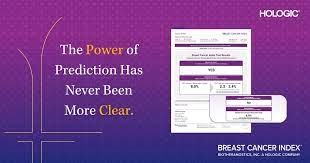Presented by Ruth O’ Regan et al.
Research remains an essential part of cancer care. In this blog, we will provide information about recent updates or new approvals as it applies to breast cancer written by Dr. Sharon Wilks.
This was a review of the tool called the Breast Cancer Index and its application for predicting the benefit of the addition of Ovarian Function Suppression (OFS) with the addition of Exemestane in premenopausal women enrolled in the SOFT (Suppression of Ovarian Function Trial).

The SOFT trial enrolled 3066 patients in 2002 that had been diagnosed with invasive early stages of breast cancer that were premenopausal. Some had received chemotherapy/CT (53% of the SOFT study cohort) but had remained premenopausal after the CT was given and this cohort then went on to receive adjuvant endocrine blockade while others only received endocrine blockade (47%). The treatment arms were Tamoxifen for five years (this study was run prior to the understanding that 10 years of adjuvant Tamoxifen is better) versus Tamoxifen + use of OFS for five years versus Exemestane + OFS for five years.
Updates of the SOFT study was presented by Dr. Meredith Regan at SABCS in December 2021 with a 12-year median follow-up showing a 3% improvement in freedom from Distant recurrences with the group who had received Exemestane (an Aromatase Inhibitor or AI) + OFS when compared to Tamoxifen alone and improvements in comparison to those assigned to OFS + Tamoxifen.
Though clearly this information was practice changing, it remains unclear as to who truly may benefit from the addition of an AI. At present, there is no specific biomarker that helps define who benefits and who may not benefit from this treatment. Furthermore, the use of AI therapy does offer additional toxicities including depression, bone pain, diminished libido, vaginal dryness and loss of bone density.
The current trial presentation looked at the usefulness of a gene assay known as the Breast Cancer Index/BCI as a prognostic tool in N0 & N1 patients and if it was able to be predictive of the usefulness of OFS in this cohort of patients. This analysis is a genomic test which combines a molecular grade index with HOXB13/IL17BR (H/I ratio) that assesses breast cancer signaling. Prior studies have shown evidence for its usefulness in patients with N0 breast cancer in determining the need of extended therapy after five years of endocrine blockade and a modified index referred to as the BCIN+ that incorporates tumor size and grade for patients with N1 (lymph nodes positive for cancer at resection between 1-3) patients. Prior reports showed that a likelihood of extension of therapy was reported as a Yes (BCI H/I ratio was high) or No (BCI H/I ratio was low).
Of the original study cohort, 1687 specimens were available for the required RNA quantity for assessment.
This study confirmed that the BCI was prognostic. Patients with a BCI low experienced the best outcome with the lowest risk of distant recurrence while those with BCI high scores experienced the highest risk of distant recurrence (in other words as the BCI index score rose, the risk of distant recurrence was higher). This BCI was of similar prognostic benefit in both the N0 & N1 groups. The BCIN+ did appear to correlate with tumor grade: patients with low tumor grade of 1 had much lower BCI scores while those with higher grade 2 & 3 had higher BCI scores.
This analysis also confirmed this tool to be predictive of treatment benefit with the addition of Exemestane (AI) to OFS in the BCI H/I low group. In the OFS + Exemestane compared to Tamoxifen, there was a 12% absolute benefit favoring use of OFS and an AI. Further, in this BCI low H/I group, there was a significant difference in benefit with the Tamoxifen + OFS having a 7% absolute benefit compared with the Tamoxifen only treated group.
The BCI High H/I ratio was not found to be predictive of OFS + AI benefit over other treatment groups. The curves with the different treatments were superimposable suggesting this was not a useful biomarker to determine benefit of OFS or OFS + AI/Tamoxifen in this group.
Study Conclusions:
- Though there were not samples for every participant from the original SOFT trial, the group analyzed in this report did appear to be comparable to the overall study population.
- BCI scores were prognostic; the higher the H/I ratio, the worse the outcome for breast cancer events.
- BCI H/I ratios were predictive of OFS benefit in the BCI low cohort but not predictive of benefit in the BCI H/I high ratio groups.
The findings were somewhat unexpected. Most had seen from other studies/reports that BCI (H/i) high ratios appear to predict for the usefulness of extended therapy and that the use of OFS specifically had previously been shown to benefit the clinically higher risk patients. In this current trial, those patients with BCI high ratios did not seem to derive benefit with the addition of OFS or with OFS + an AI.
So as in many studies of research, the findings generate more questions than provide answers and some reports give us information different than what we would expect.
I think the take-home message from this report is that the BCI test appears prognostic in premenopausal women – tumors with high BCI (H/I ratios) have a poorer outcome related to breast cancer events. Those with BCI (H/I) Low ratios benefit from the addition of OFS and OFS with Exemestane.
Perhaps this biomarker is not a powerful predictor of OFS in premenopausal patients with tumors with higher proliferation but at present, we cannot consider its use in the BCI (H/I ratio) high group.
Research is ongoing to continue to find better biomarkers in those at high risk of relapse and we encourage all who may be eligible for participation in a clinical research trial to participate. We at NEXT oncology continue to offer a large array of new studies to help improve outcomes and our understanding of cancer.
